J5 SUBMARINE
|
| Type of dive: |
|
Scuttled wreck |
| Snorkelling: |
|
No, too deep! |
| Scuba: |
|
Deep (Advanced for the shallower sub) |
| Access: |
|
Boat only (30 minutes) |
| Depth: |
|
36 metres (120’) |
| Visibility: |
|
8 – 30 metres (25-100’) |
| Water temperature: |
|
13 – 18°C (55-65°F) |
| Seasonal: |
|
No, but November to June best |
Victoria is the home six First World War submarines, four of which lay in water around 30 metres (100’) deep!
Just prior to World War I, in an effort to match the speed of the German U-Boats rumoured to be 18 Knots, the Royal Navy commissioned seven J Class submarines.
The seven triple screw J Class submarines, capable of 19 Knots (22 mph), which at the time were the fastest submarines afloat.
They were the only triple screw submarines ever built for the Royal Navy and each submarine had three 12-cylinder diesel engines for surface propulsion and a battery driven electric engine for underwater propulsion. The submarines were armed with six 18-inch torpedo tubes, four in the bow and two abeam, and two AA guns.
Sadly, the J6 was sunk by friendly fire in the North Sea in 1918, and shortly after the war, the other six were gifted to Australia.
Once in Australia however, they were sold for scrap and scuttled.
The J7 became a breakwater at Sandringham Yacht Club, J3 was run ashore at Swan Island off Queenscliff to generate power to the island and other four were scuttled off Barwon Heads in the Ships Graveyard just a short 30-minute boat ride from either Portsea or Queenscliff.
The J5, also known as the “36 Metre Sub”, was located lying upright fully intact in 36 metres (120’) by the Geelong Skindivers Club on 4 May 1974. It was the second of the J Class submarines discovered by the club.
The wreck is covered in yellow zoanthids, sponges and ascidians and usually supports large schools of fish such as splendid perch.
The narrow sleek bow sits off the bottom where the four forward torpedo tubes are readily observable. About a third of the way along the wreck towards the stern the conning tower sits above the deck and at the stern, the rudder, propeller shaft supports and stabiliser frames are obvious.
Large deck openings along the length of the wreck allow easy internal access, but caution should be taken to avoid silting, particularly in the bow where the torpedo tubes are and, in the stern, where the crew quarters were located.
Although the vessel was stripped before scuttling, internally there is lots to see including the gas bottle storage racks which are quite evident.
All the great diving on offer in the Port Phillip Heads area can be accessed from either Queenscliff on the west side or Portsea on the east.
Copyright © 2024 Steve Sinclair
Vessel details:
Class & type: J Class Submarine
Launched: Plymouth 1916
Sank: 1926 (scuttled)
Length: 83.5 metres (274’)
Beam: 7 metres (23’)
Displacement: 1210 tons (1760 tons submerged)
Speed: 19 Knots (9.5 knots submerged)
Passengers: Nil
Other great wrecks to visit while you are there:
90ft (27m) Sub (J4), Winged Sub (J1), SS Coogee, Ex-HMAS Canberra and
Eliza Ramsden.
Local dive services:
|
|
SCUBABO DIVE VICTORIA |
 |
BLAST EXPERIENCES |

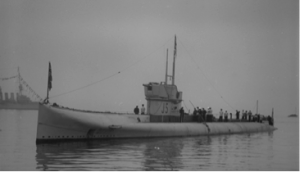
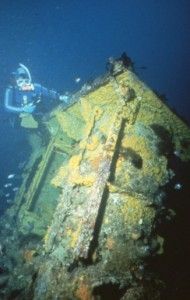

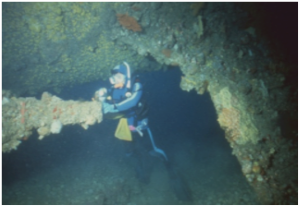
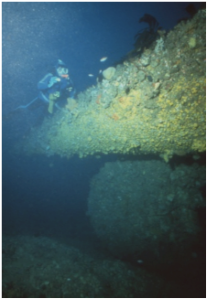
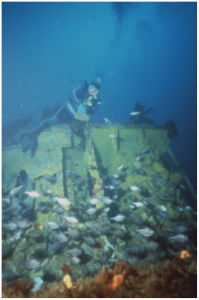
OTHER INFORMATION
LOCATION
State or Territory:
Victoria
Nearest City:
Melbourne
Nearest Regional City:
Not relevant
Nearest Town:
Queenscliff/ Portsea
HOW TO GET THERE
Air:
Nearest International Airport:
Melbourne
Nearest Domestic/Regional Airport:
Avalon for Queenscliff/Melbourne for Portsea
Road:
Melbourne to Queenscliff:
1.5 hours (110 km/70 mi) via M 1
Melbourne to Portsea:
1.5 hours (110 km/70 mi) via M 1 and Mornington Peninsula Fwy/M11
Bus:
From Melbourne
Train:
Queenscliff:
From Melbourne to Geelong then bus
Portsea:
Not available
Ferry:
From/to Sorrento or Queenscliff
THINGS TO DO
Queenscliff:
Bay Eco Tour
Fishing
Marine Discovery Centre
Blues Train
Queenscliff Fort
Bellarine Railway
Maritime Museum
Wineries
Portsea:
Sea Kayaking
Fishing
Surfing
Wineries
Point Nepean Quarantine Station
Point Nepean National Park
Fort Nepean



















